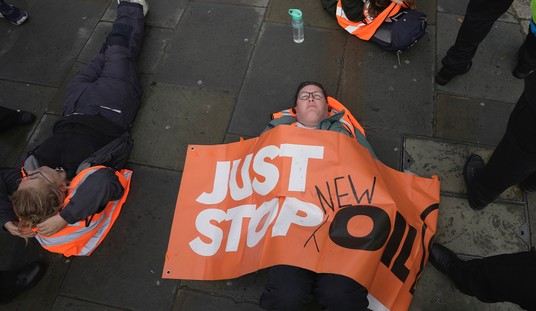The final look at economic growth in the final quarter of 2013 provided a minor boost to the last estimate, but hardly enough to shake off the stagnant tenor of the last four years of the recovery. The BEA now estimates that gross domestic product (GDP) grew at a 2.6% annualized rate, slightly better than the interim estimate of 2.4% but still significantly below the first advance estimate of 3.2%:
Real gross domestic product — the output of goods and services produced by labor and property located in the United States — increased at an annual rate of 2.6 percent in the fourth quarter of 2013 (that is, from the third quarter to the fourth quarter), according to the “third” estimate released by the Bureau of Economic Analysis. In the third quarter, real GDP increased 4.1 percent.
The GDP estimate released today is based on more complete source data than were available for the “second” estimate issued last month. In the second estimate, the increase in real GDP was 2.4 percent. With this third estimate for the fourth quarter, the general picture of economic growth remains largely the same; personal consumption expenditures (PCE) was larger than previously estimated, while private investment in inventories and in intellectual property products were smaller than previously estimated (see “Revisions” on page 3).
However, real final sales of domestic product did look better than previous estimates. The new figure for Q4 is 2.7% rather than 2.3% in the previous Q4 estimate, which means inventory expansion didn’t play a role in Q4 growth numbers. That’s still a stagnation number, hardly anything from which to expect a big burst of job creation, but it’s better than we saw in the previous two estimates for Q4.
Reuters is a little more optimistic:
The number of Americans filing new claims for unemployment benefits unexpectedly fell last week and touched its lowest level in nearly four months, suggesting the labor market was strengthening.
A separate report showed U.S. economic growth was a bit faster than previously estimated in the fourth quarter, displaying underlying strength that could bolster views that the slowdown in activity early in the year would be temporary.
Initial claims for state unemployment benefits declined 10,000 to a seasonally adjusted 311,000, the lowest level since November, the Labor Department said on Thursday. Claims for the week ended March 15 were revised to show 1,000 more applications received than previously reported. Economists polled by Reuters had forecast first-time applications for jobless benefits rising to 325,000 in the week ended March 22.
At least a little of this is wishcasting. “Displaying underlying strength” is a rather curious claim considering that 2.6% growth after nearly five years of stagnation is hardly considered a strong number — and it’s not only a decrease from the advance estimate, it’s a decrease from the final Q3 GDP number, too (4.1%) and only nominally better than the final year-end GDP growth figure of 1.9%.
As for the weekly jobless claims, the four-week average of 317K does look pretty good from a historical perspective — but that perspective included the context of ~65% civilian participation in the workforce. It’s not entirely correlative in the best of times anyway, but with the participation rate plunging since mid-2010, the correlative value of the series looks in need of recalculation at the least.








Join the conversation as a VIP Member